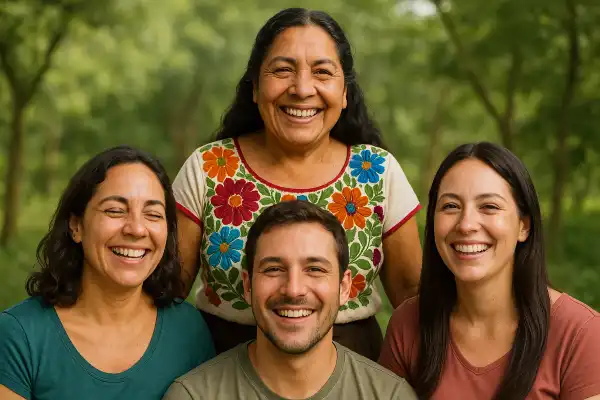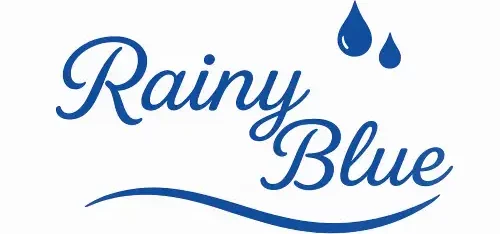Who practices curanderismo is a question that reveals the beautiful tapestry of healers who have preserved our ancestral wisdom for generations. This ancient healing tradition, practiced throughout Latin America and Mexican-American communities, encompasses a diverse community of dedicated practitioners who serve as bridges between the physical and spiritual realms.
María del Pilar Fernández, drawing from her family’s deep curandera lineage in Oaxaca, believes that understanding these sacred healers helps us reconnect with the profound healing wisdom our ancestors entrusted to specific individuals called to serve their communities through curanderismo.
Who practices curanderismo?
Curanderismo is practiced by specialized traditional healers known as curanderos (male) and curanderas (female), who come to their vocation through spiritual calling or family lineage rather than formal academic study. These healers are believed to receive el don (the gift) from God or a higher power, granting them divine knowledge and skills to practice healing.

Types of curanderismo practitioners
The world of curanderismo encompasses various specialized practitioners, each with distinct roles and expertise:
Yerberos and hierberos serve as the herbalists of our communities. These knowledgeable healers prescribe herbal teas, baths, and poultices to cure both physical and mental illnesses, drawing upon Mexico’s estimated 4,500 to 10,000 medicinal plant species. They carry forward thousands of years of botanical wisdom, understanding which plants heal specific ailments and how to prepare them safely.
Sobadores practice the healing art of touch. These practitioners perform massage-like therapy and energy work, commonly treating empacho (constipation) and musculoskeletal pain through hands-on healing techniques. The sobador works especially with the stomach and digestive tract, using massage and acupressure while incorporating herbal treatments as needed.
Parteras hold the sacred role of midwives. These traditional midwives attend births and recommend herbal treatments, massages, and other therapies to support pregnancy, labor, delivery, and postpartum care. In Mexico’s IMSS-Bienestar program alone, over 7,000 parteras now promote family planning methods and attended more than 4,000 births in 2022.
Hueseros specialize in bone and muscle healing. These bone and muscle therapists emphasize physical ailments, setting bones and providing chiropractic-like care for sprains and muscular damage. However, fewer hueseros practice today because modern hospitals can provide more comprehensive orthopedic care for serious fractures.
Espiritualistas focus on spiritual healing. These faith healers address soul wounds through religion, spiritualities, and rituals, working primarily with prayer and spiritual cleansing ceremonies. They help restore balance when illness stems from spiritual disconnection or malevolent forces.
Oracionistas work through the power of prayer. These practitioners focus primarily on prayer-based healing, though they may incorporate other modalities as well. They understand that words carry healing power when spoken with pure intention and deep faith.
How practitioners are called to curanderismo
Unlike conventional medical training, curanderos typically inherit their healing powers from previous generations, though sometimes individuals outside the family may be blessed with the gift. The calling often manifests through dreams, visions, or profound spiritual experiences that cannot be ignored.
Once their calling is accepted and established, aspiring curanderos develop their knowledge and skills through multi-year apprenticeships with practicing healers. This sacred transmission ensures that ancient wisdom passes intact from elder to student, preserving both techniques and spiritual understanding.
Geographic and demographic patterns
Today, curanderismo is practiced throughout Mexico, Central and South America, and the southwestern United States, with historical concentrations along the Mexico-United States border. Research shows that traditional healing practices among Mexican and Mexican Americans may be as high as 50-75% in some parts of the United States.
Hispanics born in their home countries are more likely to seek curanderos than those born in the United States, often using these healers to maintain connection with their cultural traditions. In rural areas of Mexico, particularly regions with strong Maya heritage, traditional medical practitioners often work alongside Western medical practitioners.
Women’s prominent role in curanderismo
Unlike many traditional healing practices that are patriarchal, Mexican Traditional Medicine features women playing significant roles as herbalists, curanderos, shamans, and more. Between 12 to 60% of Mexican women depend on traditional medicine practices and herbal medicines for their primary healthcare needs, depending on location.
Traditionally, the roles of yerbera (herbalist), partera (midwife), sobadora (folk chiropractor), and curandera espiritual (spiritual healer) have been primarily reserved for women, though some men also practice as curanderos, sobadores, or spiritual healers.
Contemporary institutional recognition
Mexico’s healthcare system now officially recognizes traditional healers, with IMSS-Bienestar currently employing 753 traditional medical practitioners, including curanderos, sobadores, hierberos, parteras, and hueseros. Universities like the University of New Mexico now offer curanderismo courses, helping preserve and transmit this knowledge to new generations.
Modern curanderas like Grace Alvarez Sesma blend traditional Indigenous healing practices with contemporary approaches, believing in thoughtful inclusion of traditional methods alongside conventional medical treatments when appropriate.
The practitioners of curanderismo represent a living bridge between our ancestors’ wisdom and contemporary healing needs. Whether they specialize in plant medicine, energy work, spiritual cleansing, or bone setting, each curandero carries forward sacred knowledge that honors the whole person – body, mind, emotions, and spirit.
Disclaimer
Please note that Maria is not a physician, psychologist, or nurse. These culture-specific spiritual healing services are not meant to replace medical or psychological diagnosis and treatment. It is recommended that you see a licensed physician or licensed health care professional for any physical or psychological ailment you may have.
Last month, María worked with Esperanza, a young mother from Tlaxiaco who came seeking help for her infant son, Mateo. The baby had been restless and crying inconsolably for weeks, refusing to eat properly despite visits to the local clinic. Esperanza’s grandmother suspected susto – a spiritual fright that had displaced the child’s soul.
During their session, María gently held Mateo while conducting a barrida with fragrant herbs, sweeping away the negative energy that had attached itself during a recent thunderstorm that had terrified the infant. She prepared a calming tea blend of manzanilla and hierba buena for Esperanza to give Mateo in small doses, while teaching the young mother prayers of protection to recite each evening. Within three days, Mateo was sleeping peacefully and feeding normally. Esperanza later told María that understanding her role as both mother and spiritual guardian had given her confidence she never knew she possessed, showing how curanderismo heals not just individuals but entire families.
